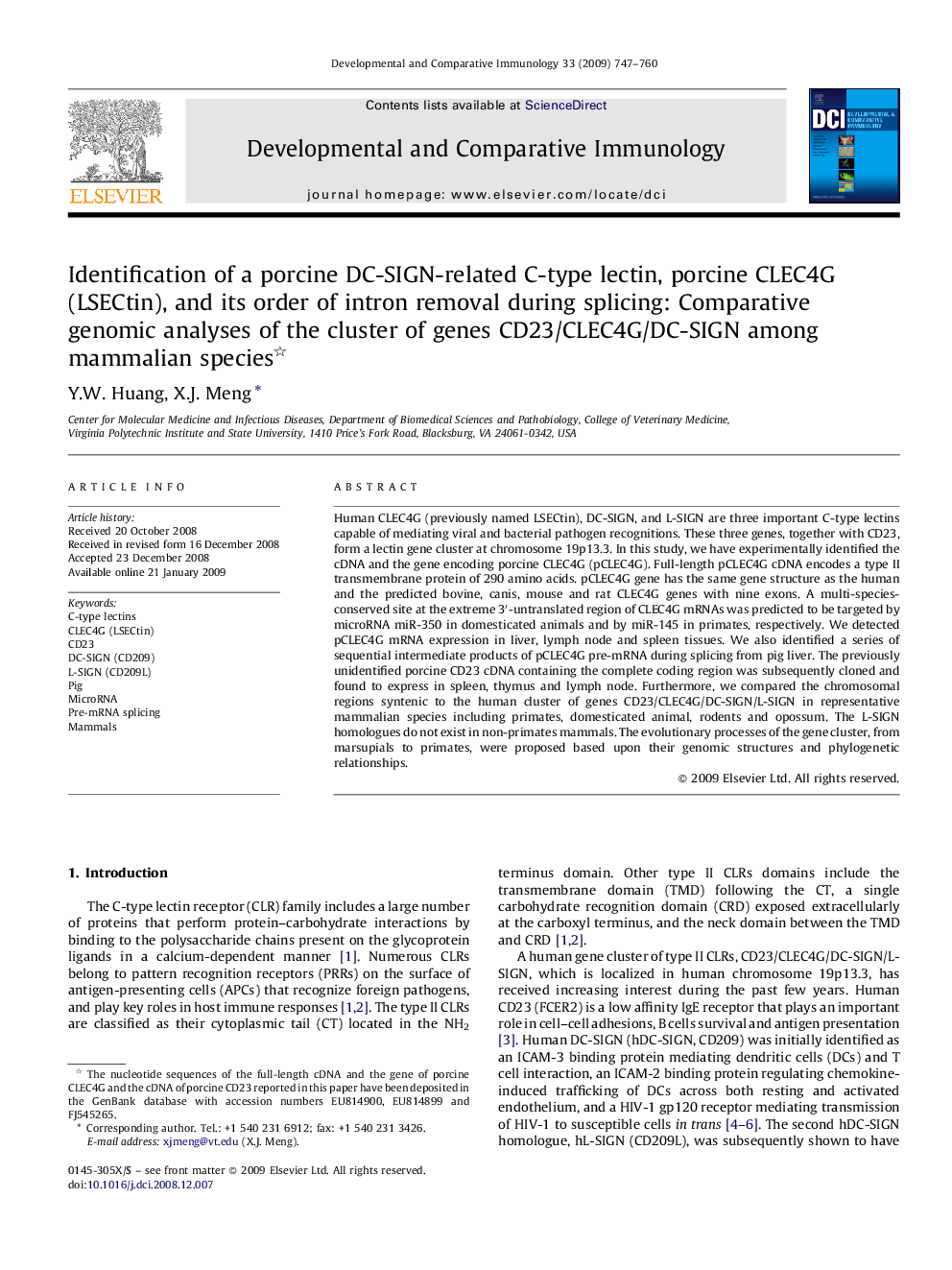| کد مقاله | کد نشریه | سال انتشار | مقاله انگلیسی | نسخه تمام متن |
|---|---|---|---|---|
| 2430049 | 1106538 | 2009 | 14 صفحه PDF | دانلود رایگان |

Human CLEC4G (previously named LSECtin), DC-SIGN, and L-SIGN are three important C-type lectins capable of mediating viral and bacterial pathogen recognitions. These three genes, together with CD23, form a lectin gene cluster at chromosome 19p13.3. In this study, we have experimentally identified the cDNA and the gene encoding porcine CLEC4G (pCLEC4G). Full-length pCLEC4G cDNA encodes a type II transmembrane protein of 290 amino acids. pCLEC4G gene has the same gene structure as the human and the predicted bovine, canis, mouse and rat CLEC4G genes with nine exons. A multi-species-conserved site at the extreme 3′-untranslated region of CLEC4G mRNAs was predicted to be targeted by microRNA miR-350 in domesticated animals and by miR-145 in primates, respectively. We detected pCLEC4G mRNA expression in liver, lymph node and spleen tissues. We also identified a series of sequential intermediate products of pCLEC4G pre-mRNA during splicing from pig liver. The previously unidentified porcine CD23 cDNA containing the complete coding region was subsequently cloned and found to express in spleen, thymus and lymph node. Furthermore, we compared the chromosomal regions syntenic to the human cluster of genes CD23/CLEC4G/DC-SIGN/L-SIGN in representative mammalian species including primates, domesticated animal, rodents and opossum. The L-SIGN homologues do not exist in non-primates mammals. The evolutionary processes of the gene cluster, from marsupials to primates, were proposed based upon their genomic structures and phylogenetic relationships.
Journal: Developmental & Comparative Immunology - Volume 33, Issue 6, June 2009, Pages 747–760